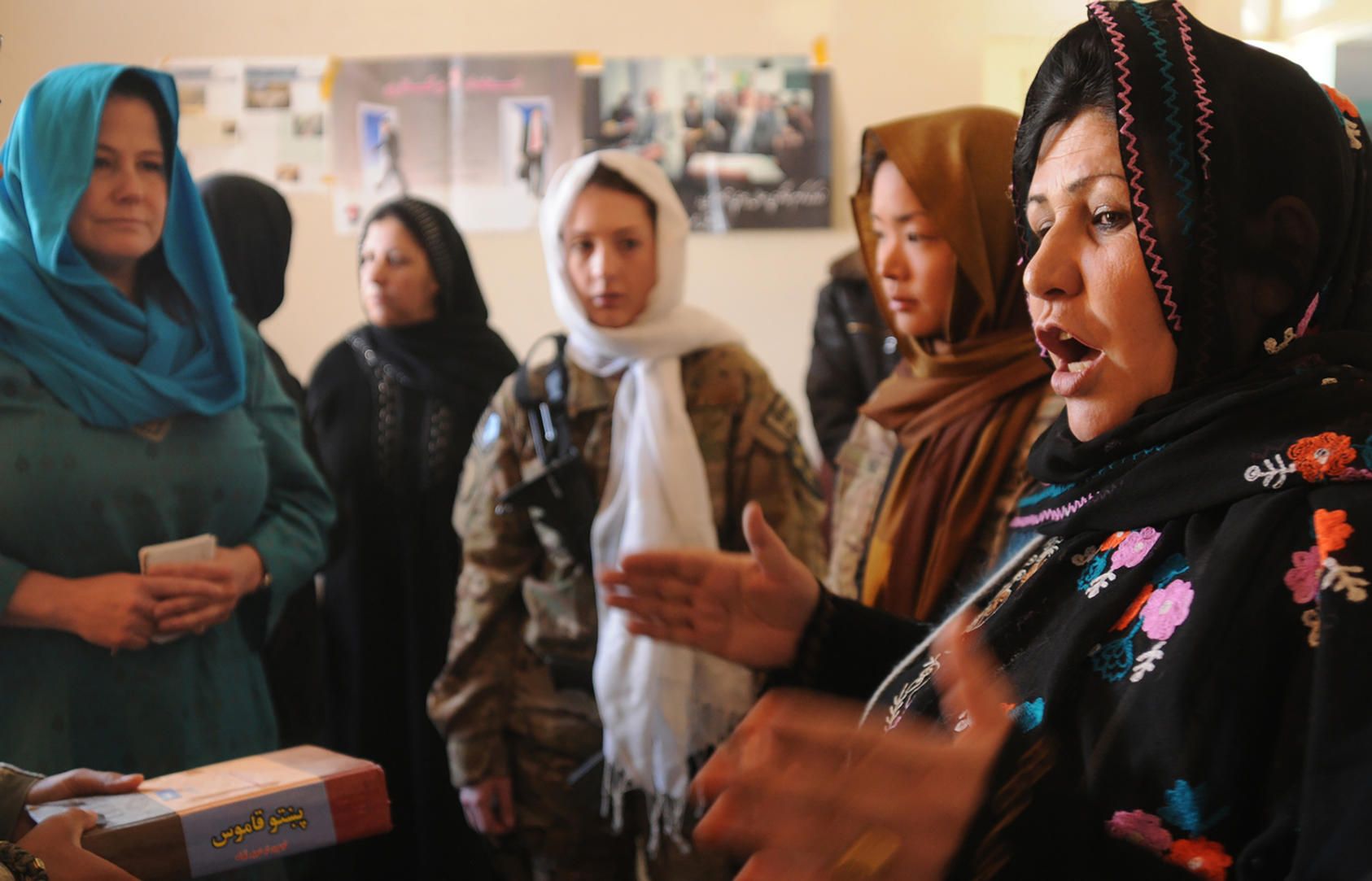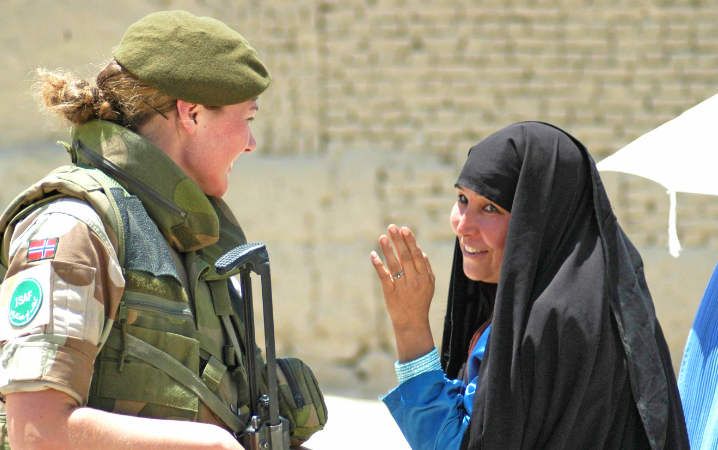In peace operations and state building, females not only constitute one half of the population. It can be argued that they are potentially the most useful part. Thus, modern doctrines for such operations should give the gender perspective its warranted attention, coupled with sufficient female representation in the force to actually effect the proscribed actions. The Norwegian Government's Action Plan on Women, Peace and Security is a clear step in this direction, but requires prioritization on all levels of execution. This last point has proven difficult in the past.
Policy versus Practice
Equal rights and opportunities for women in both political processes and society in general is a prominent theme in policy development at the United Nations. The Post-2015 Development Agenda is the most overarching framework that promotes gender equality. This carries over to the doctrines that guide UN peace operations. In forums, discussions and position papers, member states express emphatic support for mainstreaming a gender focus in UN operations. However, reports from the field indicate that UN military leaders fall well short of their political guidance.
An easy explanation would be to blame the national culture of the countries supplying the majority of peacekeepers today. For a Norwegian officer this would be comfortable, but also wrong. This author has first-hand experience from Afghanistan of how neglected the gender perspective was, even in a competent military contingent. It was demonstrated by the low status that was afforded the gender-advisor in Provincial Reconstruction Team Maymaneh, and by how the gender-perspective became a standing joke among those who wanted to portray a more realistic, “warrior”-mindset. Gender was seen as an ideologically motivated requirement dictated by policy makers with no understanding of the realities of war.
Here, the gender proponents must accept their part of the blame. In Norwegian, NATO and UN gender policy, the arguments underscoring the need for this focus are largely normative, i.e. gender equality is important because it is the right thing to do. The problem is that there are many things that are right to do in combat; bringing your soldiers home alive, strengthening local security forces, and defeating the enemy are some examples. If all you are presented with is an ideological rationale, it is understandable that officers view gender as something that must wait until the operationally critical tasks are accomplished. The normative argument is thus insufficient. Its solitary prominence is also unnecessary. There is a clear link between gender focus and mission success in peace operations and state building.
Theoretical foundation
Both biological sex and cultural gender are variables that have direct, practical implications for peace operations and state building. An extensive body of research indicates significant differences between male and female propensity for aggression[1]. Especially, higher levels of testosterone have been linked to attitudes that are more competitive during interaction[2]. During earlier periods of human societies, a violent, confrontational approach to resource competition proved effective[3]. Given this, it is unsurprising that traits such as physical courage and assertiveness have become associated with the male gender[4]and have attained high social status. As resource scarcity becomes more acute in a society, the more pronounced these masculine traits are likely to be and the higher they are valued[5].
In the context of peacekeeping operations, it is not beneficial to be reliant on that half of the population that is biologically and culturally most prone to aggressive behavior. A conflict that is framed as a zero-sum-game as little chance of being peacefully resolved. Understanding of the conflict must move towards a view that a mutually beneficial solution is possible. This gives relevance to the fact that females are more likely to adopt a “collaborative conflict resolution style”[6]. It is not necessarily that adolescent and young adult males do not want a conflict resolved in a way that benefits all parties. Rather, it would seem they are culturally and genetically predisposed against seeing this as an alternative.

Women already fill essential roles in every society. In pre-modern societies, these roles include taking care of the family or in agriculture. However, in most of these societies the men control the physical, coercive power both at the personal and group level. Because of this, women are unable to translate their important roles into political leverage. The men can simply force them to continue providing the needed service. As long as the younger male cohorts control the physical means of power and the political channels of influence, peacekeepers will likely continue to be faced with opposing parties that show no real will to reach a peaceful settlement. In this dynamic, we find the operational rationale behind a strengthened gender perspective. From here, it should be possible to deduce some concrete actions that can translate gender focus into broader mission success.
Operational implications
Peacekeepers and counter-insurgents should safeguard female physical security. Only when they are free from the threat of violence will they be free to assert themselves at the local level with the strength that their societal contribution merits.
When women feel secure, they should be provided arenas for political influence. This could either be through women’s councils that have checks and balances vis-à-vis the local male power brokers, or equal representation on the local level. As this would challenge established power structures, our forces must be prepared to preserve these changes coercively at first.

Information operations should highlight increased female influence at the local level and disseminate the possible benefits of collaboration with former rivals. Parallel to this information, quick impact projects should be utilized to give tangible examples of the benefits of collaboration.
This approach is resource demanding. It must necessarily focus on a smaller number of selected areas. A broader information campaign should therefore broadcast positive results to other areas. In this way, stretched military resources can have an effect beyond its immediate physical presence.
All these actions demand access to the female part of the population. Our forces must have sufficient female personnel both as mentors for female political activity and as a part of the force providing physical security.
In closing, gender focus in peace operations is not some naive idea dreamt up by liberal democracies. It addresses some very fundamental dynamics in the conflicts we are tasked to handle. By developing our understanding of this issue, and the ability to act on that understanding, we will save lives and have a greater chance of success in peace operations and state building.
Foto: United Nations
Artikkelen er en redigert utgave av en artikkel publisert i Forposten 1/2015
[1] For a comprehensive summary see: Baker, L. A (1999) Theories of Violence: Biology. In: Gottesman, R. (ed), Violence in America: An encyclopedia. Vol 1. New York: Charles Scribners & Sons
[2] Olweus, D; Mattsson, Å; Schalling, D; Low, H. (1980) Testosterone, Aggression, Physical, and Personality Dimensions in Normal Adolescent Males. In: Psychosomatic Medicine. Vol. 42. Nr. 2
[3] Gat, A (2006) War in Human Civilization. Oxford: Oxford University Press
[4] Worell, J., (2001) Encyclopedia of women and gender: sex similarities and differences and the impact of society on gender, Volume 1 Elsevier
[5] Durham, W.H. (1976) Resource Competition and aggression, part 1: A review of primitive war. In: The quarterly Review of Biology. Vol 51
[6] Brahnam, S.D., Margavio, T.M., Hignite, M. A., Barrier, T.B., Chin, J.M. (2005) A gender‐based categorization for conflict resolution, In: Journal of Management Development, Vol. 24 No: 3, pp.197 - 208







